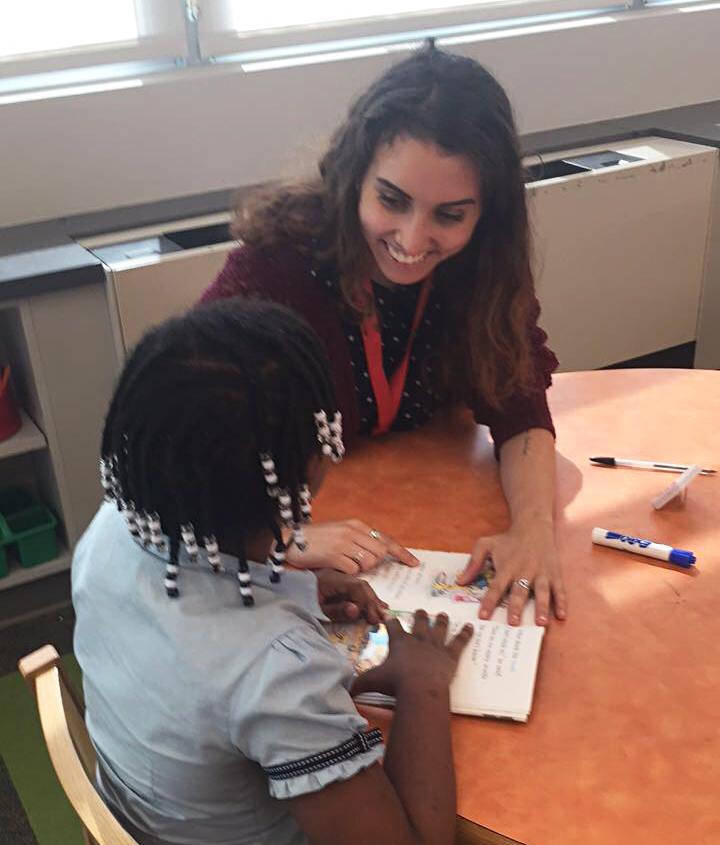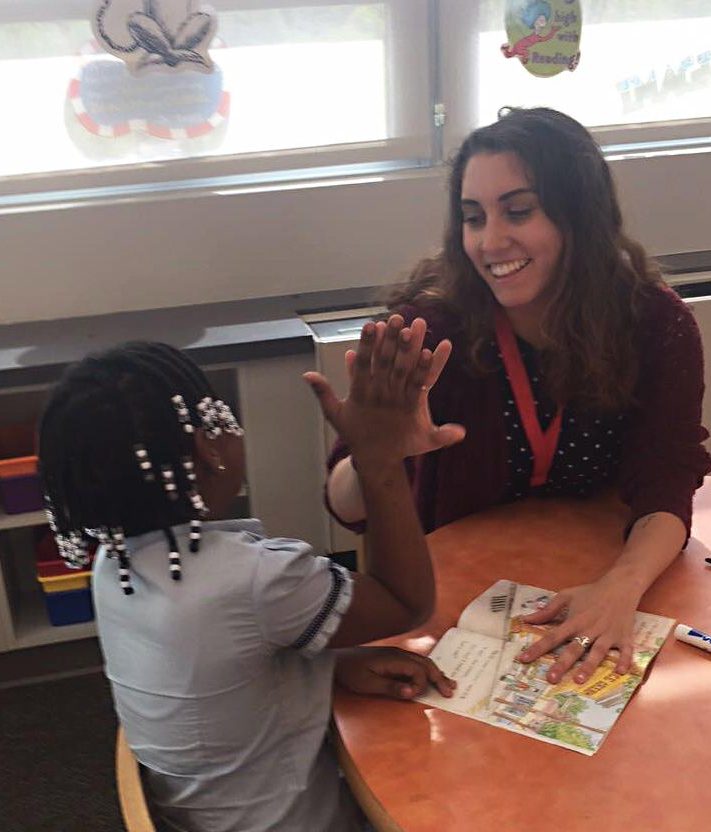Literacy is the foundation of understanding anything in life. Being able to decode letters and their sounds is essential to success in life. Many children, especially those who come from economically disadvantaged situations, do not receive adequate instruction in this area. The lack of proper training in the basic fundamentals of reading creates a literacy gap between children of color and their white counterparts, leaving poor children behind as their peers, who have access to an abundance of resources, excel.
The goal of The Literacy Lab, an AmeriCorps program, is to close the literacy gap that affects students in low-income areas.
The students I work with range from Kindergarten to 3rd grade. When I first attended my training for my job, I remember the speaker telling us, the audience, that from Kindergarten to 3rd grade, children learn to read and after 3rd grade, children read to learn.
 When children do not receive adequate attention to reading, whether at school or at home, they can quickly fall behind and if they are severely below grade level by the time they enter 4th grade, their chances of completing high school drop substantially. This fact stuck with me and continues to motivate me to do my job well every day, even on days when students simply are not ready to read.
When children do not receive adequate attention to reading, whether at school or at home, they can quickly fall behind and if they are severely below grade level by the time they enter 4th grade, their chances of completing high school drop substantially. This fact stuck with me and continues to motivate me to do my job well every day, even on days when students simply are not ready to read.
I work with 17 students every day, for twenty minutes a day, in a one-on-one setting. Some students thrive with one-on-one attention that they simply cannot get in a traditional classroom where teachers are attempting to teach as well as control difficult behaviors that can accompany working with students who may not have a great home life.
When I first met many of my students, they were excited to begin our work together. The school I work at had tutors from The Literacy Lab the year before, and the students were excited to pick up where they left off. While at training I had been told that many students would be below grade level, administering their first benchmarking test was a shock. Students in second grade did not know their letter sounds. They could barely put three letters together to create a word. Immediately, I jumped in, ready to make a difference and get all my students on grade level when I was hit by something I like to call reality.
Children do not learn overnight, especially if what they learn at school is not reinforced at home. I quickly came to realize this and was frustrated, knowing that many of my students would shine if they practiced at home. Encouraging students to read at home has been a task that I have struggled with throughout the entire year with moderate success.
Depending on how far below grade level a child determines their “intervention”. Their reading interventions range from learning to visually correspond letters to their respective sounds to being given a minute to verbally read a passage and then being asked various questions about the passage they read. A majority of my students receive their interventions through a special program called “Great Leaps” that incorporates Sound Awareness, Letter Recognition and Phonics, High-Frequency Words, and Stories.
Each student receives a behavior chart and at the end of each session, if their behavior was sufficient, they are allowed to color in a box. Poor attitudes, a lack of effort, inability to maintain focus, and the occasional cursing will prevent them from coloring in their boxes. If they color in four boxes, their fifth box has a star in it. When a student reaches their “Star Day”, I allow them to pick a book or two from the library and read to them.
Recently, a few of my students who have been progressing rapidly have asked me if they could read the book aloud to me.
When a student goes from barely being able to read a sentence to asking you if they can read you a book, you feel a sense of pride, not only in your work but in the student’s ability to grow and achieve.
Watching my students grow over the year has been such a rewarding experience.
My first student, a third grader, was far below grade level and had no motivation to read. A couple months ago, she made me a card thanking me for helping her in her journey to becoming a better reader. She is close to being on grade level now and has asked to borrow some chapter books from my classroom library which she completed and was able to summarize for me.
Another child I work with loves our reading sessions so much that on days when her mother doesn’t want to bring her to school, she will beg her mother to take her. She will tell me that she spent all morning asking her mom to take her to school so she can read and learn more.
Sharing my love of reading with these students has been a very difficult yet rewarding experience. I joined The Literacy Lab shortly after graduating from college, seeking to share my passion for reading with those who were not often exposed to it.
Assisting children who want to read is often easy, but those who do not or do not care and are forced into this program due to their low scores can often become a battle. Encouraging them with small rewards such as cookies or a chance to just read a story can be the only motivation they need to get through one session, whereas some days I have to take them back to class if they refuse to cooperate.
The most difficult experiences can come from the emotional battles these children endure and listening to them fight and scream at one another in the hallways. Hearing that a student I work with gives their homeroom teacher a difficult time in the classroom or that they are in In-School Suspension for hitting another student is heartbreaking.
But there is not only bad. Watching them grow as readers fills my heart with such joy. Watching them grow into better students who behave well more frequently fills me with pride on their maturity. Hearing their tales of success in the classroom, as well as at home, makes me happy.











Leave a Reply
You must be logged in to post a comment.